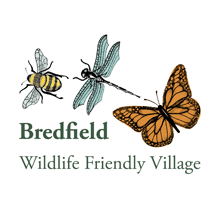This is an article in praise of a plant that is great for wildlife, but sometime gets a bad press in other respects: Ivy. In this article, we’ll be talking about the variety of Ivy named ‘Hedera helix ssp. Helix’; this is the variety that climbs; not the other variety which spreads along the ground.
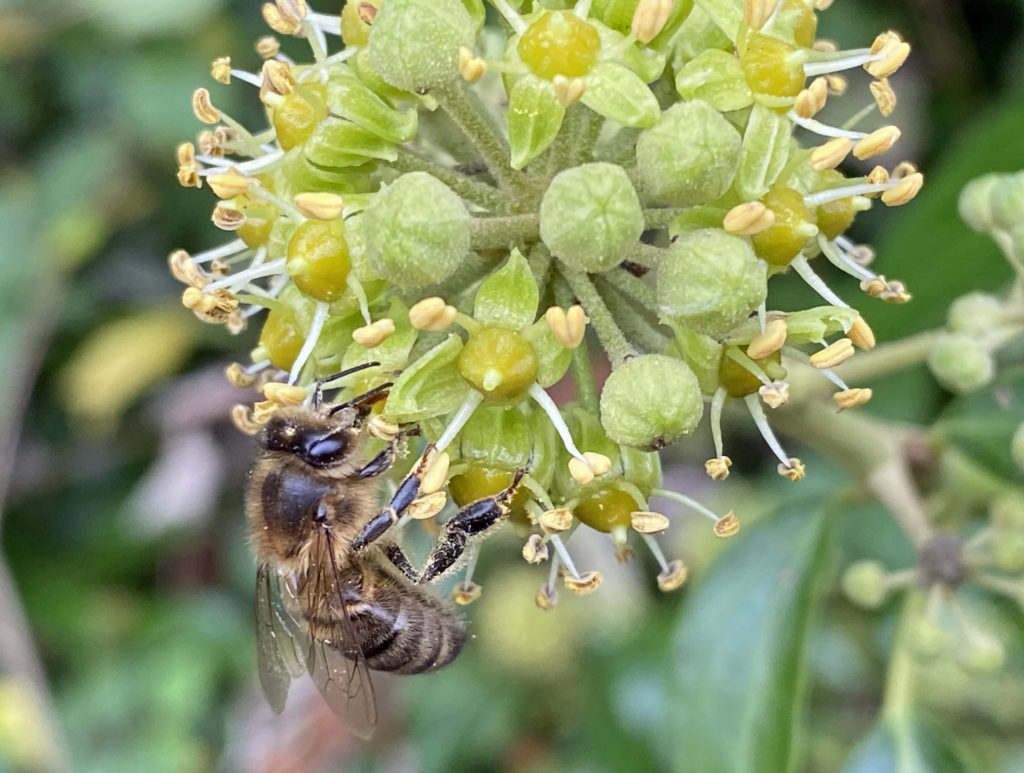
Honey Bee feeding on Ivy in October
The nectar, pollen and berries of Ivy are an essential food source for insects and birds during autumn and winter when there is little else about. Ivy is particularly important to many insects, such as bees, hoverflies and Red Admiral butterflies, before they go into hibernation. If you pass an Ivy hedge in autumn, you’ll hear the loud buzz of an array of active insects. Ivy even has its own bee – the Ivy Bee, Colletes hederae – which arrived only recently on these shores and feeds almost exclusively on Ivy flowers. At night, a different shift takes over, when moths such as Pink-barred Sallow and Black Rustic come to feed on the Ivy nectar. Ivy is also an important food plant for some caterpillars, such as Holly Blue butterfly and Swallow-tailed Moth.
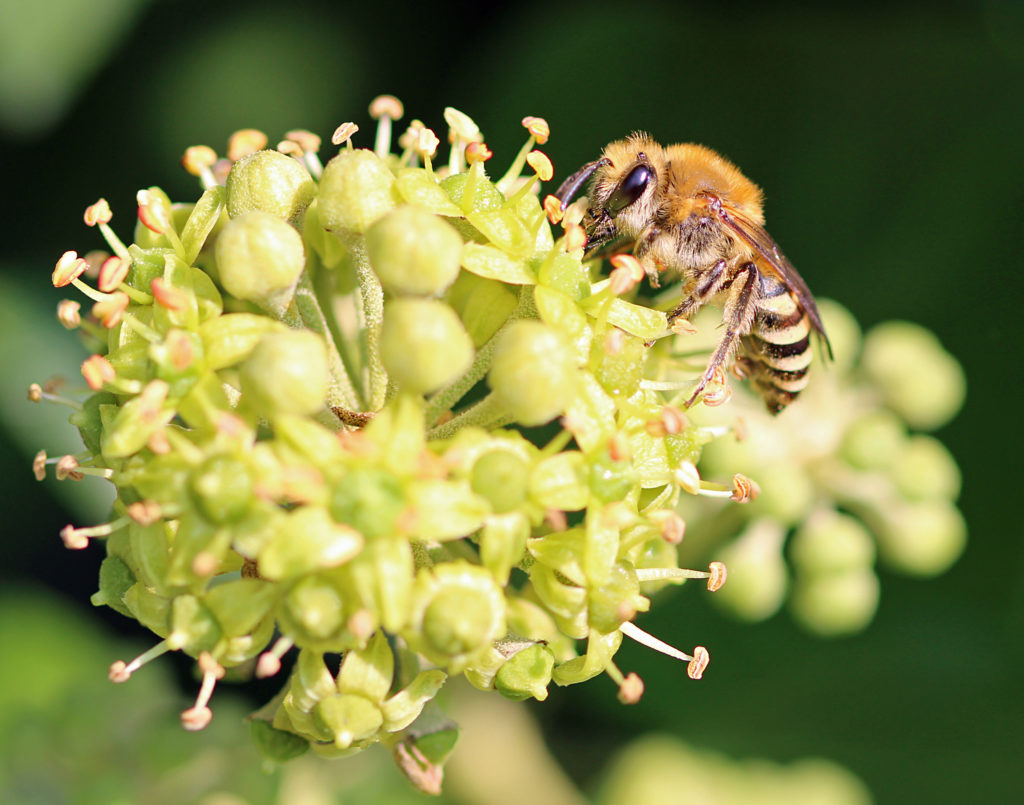
Ivy Bee
During the winter, calorie-rich Ivy berries turn a black or deep-purple colour. Several species of birds will come to feed on these berries over the winter, including: Woodpigeon, Starling, Fieldfare, Mistle Thrush, Blackbird and over-wintering Blackcap . According to the RSPB, ivy berries contain nearly as many calories, gram-for-gram, as Mars bars!
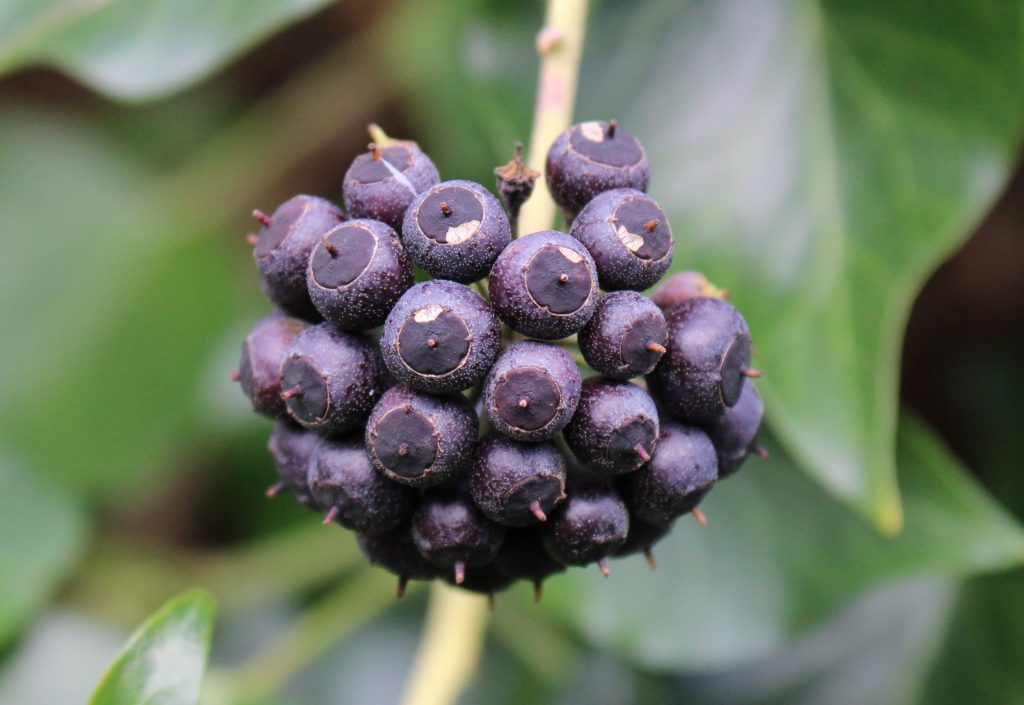
Ivy berries in January
Lastly, we shouldn’t forget that Ivy provides shelter for insects, birds, bats and other small mammals. Ivy is a wonderful resource for wildlife. You should avoid cutting it back during the period when it provides a lifeline to a range of wildlife species.
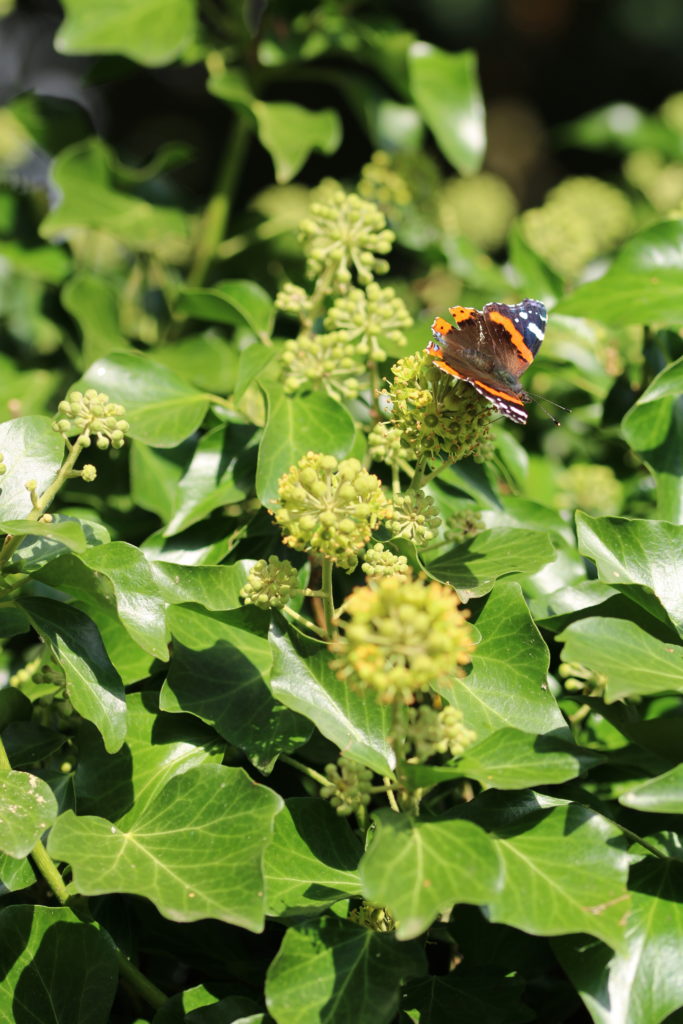
A late Red Admiral busy feeding before hibernation
So far, so wonderful; but let’s turn to the bad press that Ivy often receives.
Firstly, it is claimed the Ivy can ‘smother’ and kill the trees which it grows up. This is mistaken. Though Ivy uses trees for support, allowing it to reach upwards to better levels of sunlight, it is not a parasitic plant. It has a separate root system in the soil and so absorbs its own nutrients and water as needed. Ivy does not damage trees and its presence doesn’t indicate that a tree is unhealthy. In itself, Ivy doesn’t create a tree-safety issue, although the extra weight in the canopy can add to the likelihood of trees falling in high winds.
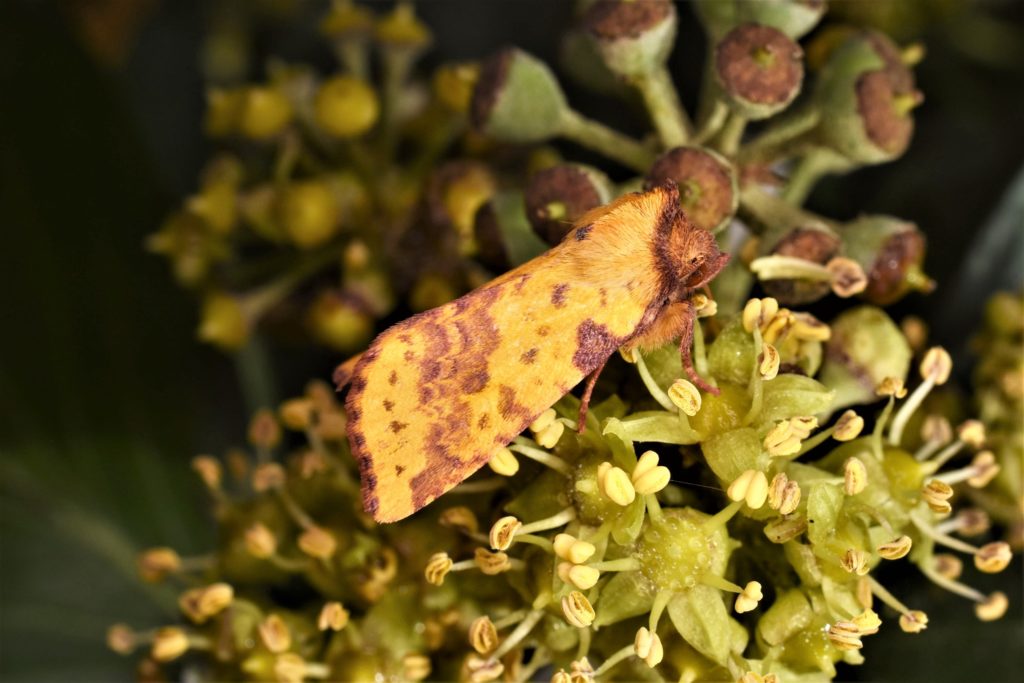
The night shift: Pink-barred Sallow moth feeding on Ivy (photo by Anthony Wren)
Ivy is also blamed for causing the crumbling of walls, up which it may climb. It is often cut back or killed for this reason. Though Ivy will exploit pre-existing holes or cracks in walls, it won’t actually cause them. There might actually be a positive consequence of having Ivy grow on your garden wall: it can act as a ‘thermal blanket’ preventing ice widening existing cracks.
Lastly, Ivy is one amongst a long list of possible plant allergies. Clearly, if you are allergic to Ivy, you won’t want it growing in your garden, whatever its benefits.
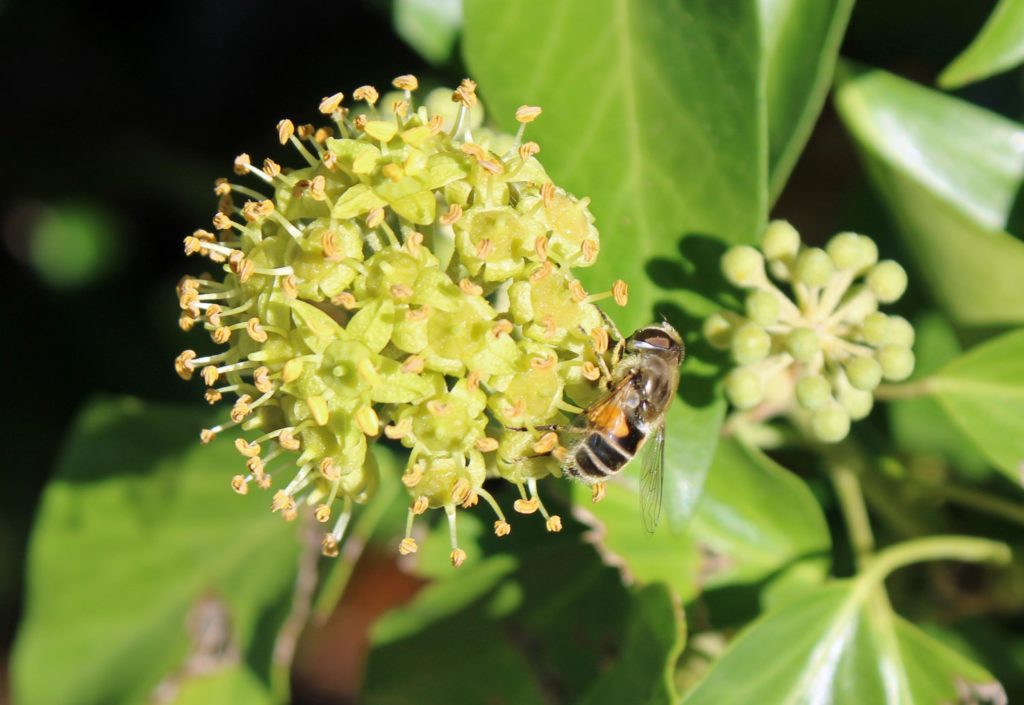
Plain-faced Drone Fly feeding on Ivy
There is no doubt that Ivy is a prolific spreader. You probably won’t want it to take over your garden, and so you may want to cut it back. This is fine, but don’t eradicate it completely and delay cutting it back until the flowers and fruit have gone. Save for a few provisos, Ivy has its place in any wildlife-friendly garden.
